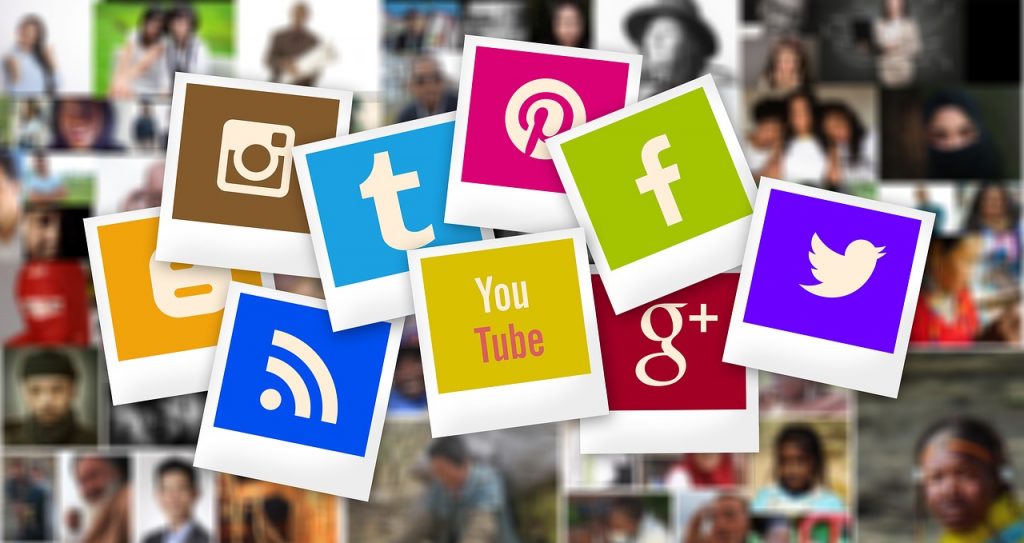It’s basically a fact of life that the holidays arrive more quickly when you are in marketing. As we get ready to flip the calendar to November, if you’re not already organizing your holiday marketing campaigns, now is time to jump on it!
With U.S. holiday retail sales predicted to increase by 2.7% to $1.093 trillion, just about every business owner should be in the midst of planning a holiday marketing campaign. A smart and strategic campaign positions your brand for an increase in traffic, sales, and brand awareness. Before you begin your journey, here are a few tips to help you plan out a successful holiday marketing campaign.
Planning a Social Media Holiday Campaign

Social media is one of the most powerful marketing tools in 2021. However, it must be used correctly in order to see a gracious return on your investment. When it comes to planning a social media holiday campaign, you may want to first ask yourself the following:
- What is the reason for this campaign? What is our main goal?
- Who are we trying to reach?
- What social media channels does our audience use?
Once you’ve answered these questions, you’ll have a better idea of where your campaign will exist online as well as a set of solidified goals. Remember, any digital marketing campaign you create should support your brand’s main goals and objectives. Campaigns without an intended objective in mind become confusing, convoluted, and muddled.
If you’re lost on content ideas or don’t know where to begin when it comes to creating a social media holiday campaign, we suggest digging into your competitors’ past campaigns and analyzing the content they’ve previously posted around the holidays. Make sure to consider both successful and unsuccessful campaigns and try to take note of what element impacted the success of these campaigns.
Above all, your social media campaign needs to offer your clients and audience some sort of value within a definitive timeline. Without a value or incentive, your holiday campaign turns into general social media posting. A few ways to provide incentives during a social media holiday campaign include:
- Seasonal products that are removed after the holiday season
- Hint: Introduce a holiday edition of one of your best-selling products
- Partake in consumer holidays and big sales days like Black Friday, Cyber Monday, New Year’s Day, and Boxing Day
- Special gift items with purchases
- Offering additional membership points or rewards
Planning an Email Marketing Holiday Campaign

When it comes to email marketing, knowing your audience is crucial. If you use an email marketing management system like MailChimp or HubSpot, you know the importance of a properly segmented audience.
If you currently have different audiences, groups, etc. in your email management system, it’s a good idea to create individual campaigns for each audience. Different segments of your audience have different needs and will likely respond better to messaging that is targeted to them specifically.
If you’ve never segmented your email marketing audience before, now is a good time to start! Consider the different demographics and groups within your audience, and how you can craft content that each group will respond to.
When you begin creating your email marketing holiday campaign, it is crucial that you optimize for the mobile experience. According to Email Uplers, mobile opens account for 46% of all email opens. Additionally, studies have shown that 69% of mobile users delete emails that are not correctly optimized for mobile viewing. So, if you spend time and effort on a beautiful design but it’s not responsive on a mobile device, you may not see much of a return on your investment. With over 62% of U.S. consumers aged 21-45 saying they rely on just their mobile device for their entire shopping journey, companies and brands need to pay close attention when it comes to mobile design and optimization for their email holiday campaigns.
Planning an SMS Holiday Campaign

Not many business owners think of adding an SMS or texting messaging campaign into their holiday marketing efforts, but you’d be surprised by the tactic’s results. In fact, 72% of retailers have increased their advertising investments for holiday mobile marketing this year. Not only is an SMS campaign easy to implement, but its results are also rapid-fire fast. According to Klaviyo, 90% of text messages are read within just 3 minutes.
If you’re struggling to find content for an SMS holiday campaign, you may want to alert your clients of:
- A new product launch
- A special promotion code available for SMS subscribers only
- New product launches
- Pop-up events
- Digital or physical events
Planning Your Paid Social Media Campaign
Sometimes pushing out organic posts on social media isn’t enough during a noisy holiday season. While you might need to stretch your paid social media budget to outperform your competition during this period, your return on ad spend can be quite high. Having an idea of your goals for your KPIs prior to launch will help you know if and when you may need to pivot or readjust throughout the season.
As we’ve pitched throughout this article, having a plan for your audience and timing can make or break your campaign. Start your advertising early! With customers being pulled in many different directions this time of year, it’s often the case that the more they see your ads, the better.
If you have data from your CRM about customers who have previously purchased during holiday seasons past, take that information and create an audience! While remarketing to these individuals can likely prove lucrative, consider expanding beyond them to a lookalike group as well.
Pintler Group Digital Marketing
The Pintler Group is the leading firm for medium to large companies and organizations that do not have a full-time digital marketing team of their own. We get seriously thrills from planning and executing superior campaigns – whether it’s during the holidays or not! From content and email marketing to paid search, social, and podcasting, our integrated strategies drive real results for our clients.





